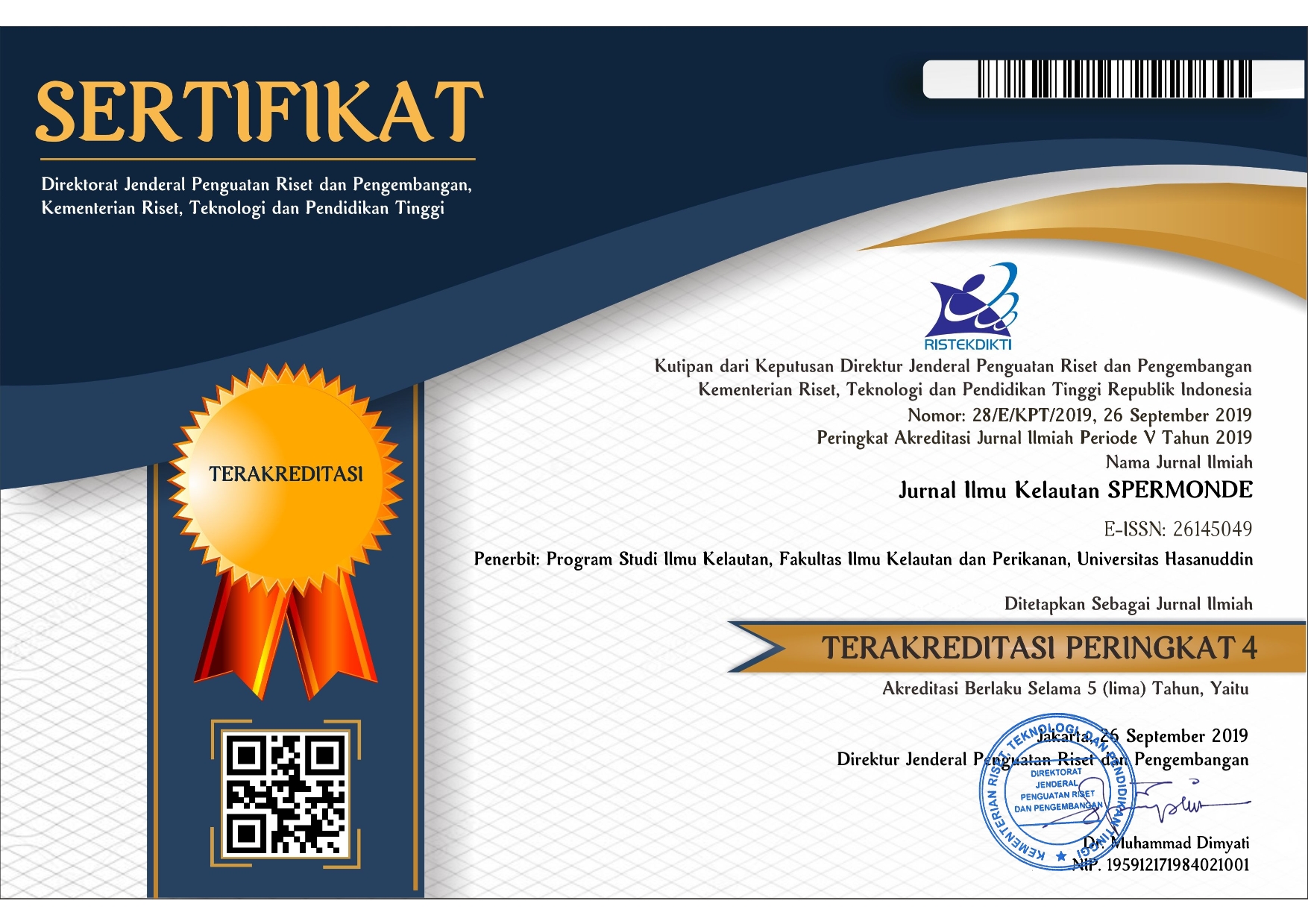ASSESSING DISTRIBUTION PATTERN FOR SKIPJACK TUNA IN BONE GULF, INDONESIA DURING JANUARY-JUNE
DOI:
https://doi.org/10.20956/jiks.v8i1.20799Abstract
Satellite remote sensing provides systematically important information on oceanographic signatures. Sea surface temperature (SST) and chlorophyll-a concentration (Chl-a) obtained from Aqua/ Moderate Resolution Imaging Spectro-radiometer (MODIS) data together with skipjack fishing data during January-June were applied to assess the distribution pattern of skipjack tuna in the Bone Gulf, Indonesia. Geographic information system techniques were employed to map out the potential fishing zone generated from the Cobb Douglass model. The fish distribution pattern was produced by the movement of the Gravity Center of the potential fishing ground. Results expressed that the most potential catch per unit efforts (fish/trip) associated with the areas where a combination of optimum SST and chlorophyll-a concentration ranged was found. The center of skipjack potential fishing zones developed in January-February along with the western regions in the Bone Gulf and moved to the northern side during March and April, and subsequently migrated to the south in May –June. We found that skipjack tuna showed a clockwise movement pattern throughout the Bone Gulf during the first semester period (January-June). Therefore, the potential fishing zones suggest corresponding to the movement of skipjack concentration, which may link with prey upon by skipjack.Downloads
Download data is not yet available.
Downloads
Published
2023-05-01
Issue
Section
Articles
License

This work is licensed under a Creative Commons Attribution-NonCommercial 4.0 International License.

This work is licensed under a Creative Commons Attribution 4.0 International License










